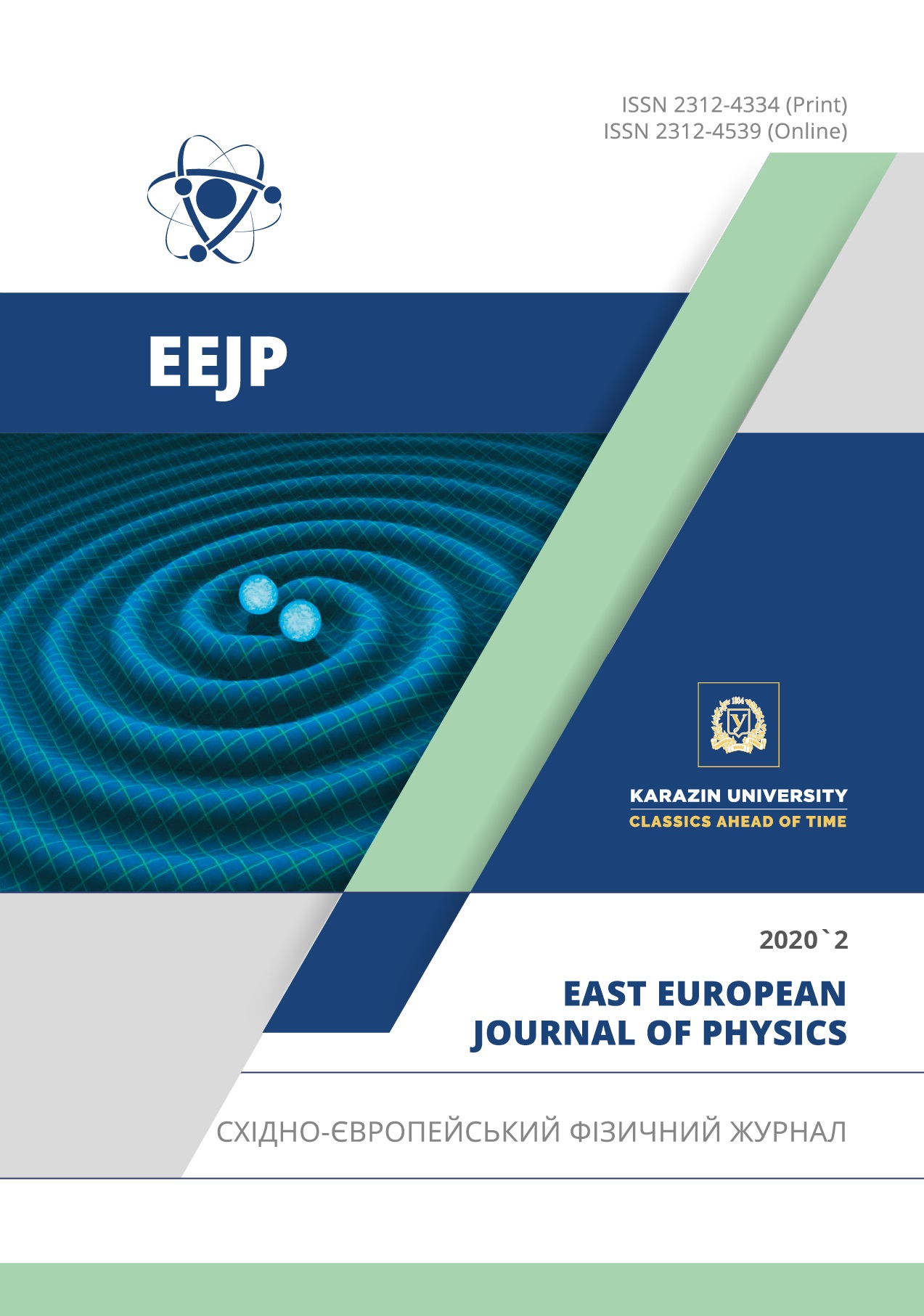Effect of Thermal-Vacuum Dispertion of Graphite
Abstract
A scientific and technical development of a high-performance thermal-vacuum method, which is an environmentally friendly process based on combination of vacuuming and high-speed thermal heating, was carried out with non-stop production of nanodispersed carbon. A review of physical processes that affect a powder material has been carried out. Thermal-vacuum treatment of C1 grade graphite 1…2 mm of size was carried out. To study the structural composition of the material in initial state and processed in a thermal-vacuum installation, X-ray diffraction analysis and electron microscopy were used. According to results of X-ray analysis, the original C1 grade graphite has two known structural modifications: hexagonal one with lattice periods ao = 0.2461 nm, co = 0.6705 nm, and rhombohedral structure about 30% – with a = 0.2461 nm and c = (3/2)co = 1.003 nm. In graphite treated in a thermal-vacuum installation, these components have been detected as the main composition. Additionally, a super-structural rhombohedral phase with periods a = 2ao = 0.492 nm and c = (3/2)co = 1.003 nm has been detected. A monoclinic phase with parameters a = 0.6075 nm, b = 0.4477 nm, c = 0.4913 nm, and β = 99.6° has also been detected, probably with the presence of iron atoms in structure. The results of analysis and calculations are generally consistent with TEM images of the reciprocal lattice of processed graphite. As a result, it was noted that the initial graphite powder was crushed to 2…40 nm with a partial change in the structure, formation of objects like multilayer nanotubes and fullerenes. It was noted that thermal deformations are involved in this effect, what can significantly accelerate the process of obtaining nanodispersed carbon material with new physicochemical and mechanical properties. The results could be widely used for industrial production of nanosized materials.
Downloads
References
N.I. Shishkov, S.A. Oparin, P.I. Soroka, and V.I. Zrajevsky, in: Proceedings of V International research-to-practice conference Science and Education, (Dnepropetrovsk – Donetsk, 2002). 19, pp. 49-50.
S.A. Oparin, and P.I. Soroka, Наукові праці Одеської національної академії харчових технологій [Scientific works of Odessa National academy of food technology], 45(3), 4-9 (2014).
S.A. Oparin, Ye.V. Leshchenko, and P.I. Soroka, Наукові праці Одеської національної академії харчових технологій [Scientific works of Odessa National academy of food technology], 37, 118-122 (2010).
A.V. Mikhailenko, S.Yu. Smyk, and Yu.A. Kunitsky, Поверхность [Surface], 3(18), 50-102 (2011).
Brychka S.Ya. Наноструктурное материаловедение [Nanostructured materials science], 2, 40-53 (2009).
Q. Zhang, S.F. Yoon, J. Ahn et al. Journal of Physics and Chemistry of Solids, 61(7), 1179-1183 (2000), https://doi.org/10.1016/S0022-3697(99)00383-2.
Y.S. Woo, N.S. Lee, D.Y. Han et al. Diamond and Related Materials, 11, 59-66 (2002). https://doi.org/10.1016/S0925-9635(01)00519-2.
V.O. Kutovoy, Patent of Ukraine No 81138, (27 July 2005). Vacuum drying device, N а200507488; stated 27 July 2005; publ. 10 December 2007. Bull. N 20, pp. 5.
V.O. Kutovoy, and I.S. Mysak, East-European Journal of Advanced Technology, 6/8(72), 35-40 (2014).
V.I. Isachenko, V.A. Osipova, A.S. Sukomel, Теплопередача [Heat conductance]. (Energoizdat, Moscow, 1981), pp. 417.
V.O. Kutovoy, D.G. Malykhin, O.S. Kalchenko, and R.L. Vasilenco, Digest of scientific papers, Поверхность [Surface], 11(26), 508-520 (2019).
Copyright (c) 2020 Volodymyr O. Kutovyi, Dmitry G. Malykhin, Olexandr S. Kalchenko Ruslan L. Vasilenko, Volodymyr D. Virych, Olexandr O. Germanov

This work is licensed under a Creative Commons Attribution 4.0 International License.
Authors who publish with this journal agree to the following terms:
- Authors retain copyright and grant the journal right of first publication with the work simultaneously licensed under a Creative Commons Attribution License that allows others to share the work with an acknowledgment of the work's authorship and initial publication in this journal.
- Authors are able to enter into separate, additional contractual arrangements for the non-exclusive distribution of the journal's published version of the work (e.g., post it to an institutional repository or publish it in a book), with an acknowledgment of its initial publication in this journal.
- Authors are permitted and encouraged to post their work online (e.g., in institutional repositories or on their website) prior to and during the submission process, as it can lead to productive exchanges, as well as earlier and greater citation of published work (See The Effect of Open Access).








